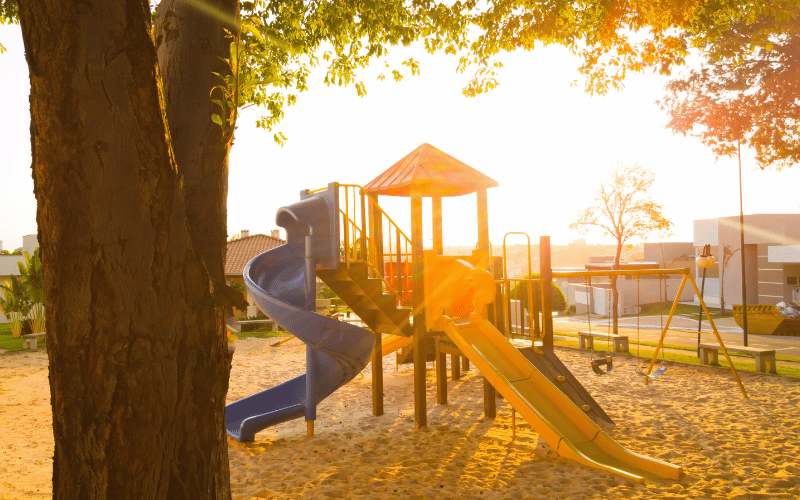Playground maintenance plays a critical role in keeping children safe and ensuring every play session is as enjoyable as it is secure. Without regular upkeep, even the sturdiest equipment can develop hidden hazards like loose bolts, worn-out surfaces, or deteriorating materials. These issues not only increase the risk of injuries but also shorten the lifespan of your investment. I’ve seen firsthand how a well-maintained playground transforms into a space where parents feel confident, children thrive, and communities come together.
Regular maintenance doesn’t just protect children—it protects your budget and reputation. By addressing small issues early, you can avoid costly repairs or replacements down the line. Proper care also reduces liability, ensuring your playground meets safety standards and minimizes risks. Beyond safety, maintenance enhances the play experience by keeping equipment functional, visually appealing, and ready for action. A clean, well-kept playground invites children to explore, climb, swing, and imagine without hesitation.
In this guide, I’ll walk you through the essentials of playground maintenance, from routine inspections to long-term care strategies. Whether you’re managing a schoolyard, a public park, or a community play area, this guide will help you create a safe, durable, and fun environment that stands the test of time. Let’s dive into the steps that make playground maintenance simple and effective.
Table of Contents
ToggleHow to Building a Systematic Playground Maintenance Program?
A well-structured maintenance program ensures your playground remains safe, functional, and enjoyable for years to come. By defining the scope, scheduling inspections, and keeping detailed records, you can create a proactive system that addresses issues before they escalate.
Defining the Scope of Maintenance
Start by identifying all the assets and areas your maintenance program will cover.
- What Assets and Areas to Include: Include all play equipment, safety surfacing, fencing, benches, and surrounding landscaping in your program. For example, swings, slides, and spinners require regular checks for wear and tear, while surfacing like rubber tiles or mulch needs monitoring for depth and integrity. Don’t overlook less obvious areas like pathways or drainage systems, as these can impact safety and accessibility.
Types of Inspections
Different types of inspections address various aspects of playground safety and functionality.
- Daily/Weekly Visual Checks: Conduct quick visual inspections to spot immediate hazards like loose bolts, broken parts, or debris. For instance, check swing chains for fraying or climbers for cracks. Rake loose-fill surfacing to maintain even coverage and remove any sharp objects.
- Monthly/Quarterly Operational Checks: Perform more detailed inspections to assess the structural integrity and functionality of equipment. Test moving parts like bearings and hinges for smooth operation, and tighten any loose hardware. Inspect surfacing for signs of wear, such as thinning rubber or compacted mulch, and replenish or repair as needed.
- Annual Professional Inspections: Schedule a certified playground safety inspector (CPSI) to conduct a comprehensive audit. These inspections identify less visible issues, such as internal rust or non-compliance with updated safety standards, ensuring your playground remains safe and up to code.
Creating a Maintenance Checklist
A detailed checklist ensures no aspect of your playground gets overlooked during inspections.
- Key Items to Include for Thorough Inspections: Your checklist should cover all equipment components, surfacing, and surrounding areas. For example, include items like checking for sharp edges, testing the stability of posts, and verifying the depth of loose-fill surfacing. Add seasonal tasks, such as winterizing equipment or inspecting for damage after storms, to address weather-related wear and tear.
Record-Keeping Best Practices
Accurate records provide accountability and help track the history of your playground’s maintenance.
- Documenting Inspections, Repairs, and Training: Record the date, findings, and actions taken for every inspection and repair. For example, if you replace a swing seat, note the date, reason for replacement, and the part used. Keep a log of staff training sessions to ensure everyone involved in maintenance understands safety standards and procedures.
- Maintaining a Log of Equipment History for Accountability: Track the lifespan of each piece of equipment, including installation dates, warranty information, and past repairs. This log helps you plan for future replacements and provides a clear record in case of liability concerns.
By building a systematic playground maintenance program, you create a framework that keeps your play area safe, compliant, and enjoyable. Each step, from defining the scope to maintaining detailed records, contributes to a playground that children and communities can rely on for years to come.
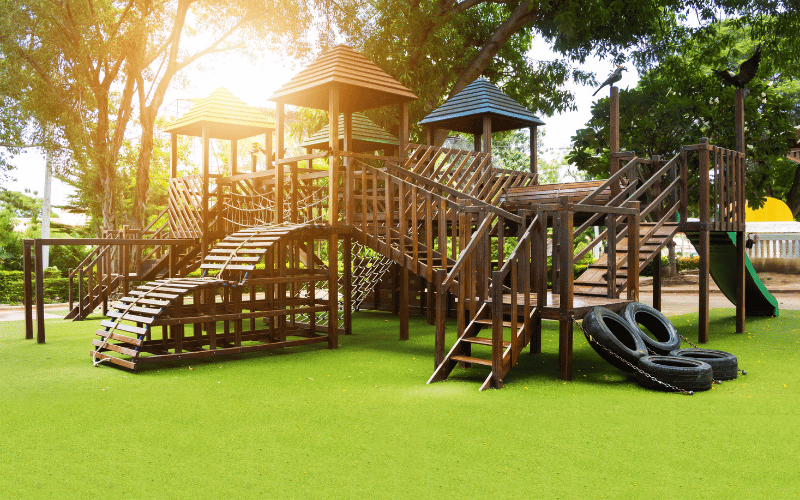
Comprehensive Inspection Guide
A thorough inspection routine is essential to maintaining a safe and durable playground. By focusing on structural integrity, moving parts, and surfacing materials, you can identify and address potential hazards before they compromise safety or functionality.
Structural Integrity
The backbone of any playground lies in its structural components. Regularly inspecting these elements ensures the equipment remains stable and secure.
- Checking for Cracks, Rust, and Fatigue in Metal Components: Examine metal posts, beams, and joints for signs of stress, such as cracks or bending. Pay close attention to areas near welds or high-stress points like swing frames. If you spot rust, remove it immediately and apply a rust-resistant coating to prevent further damage.
- Inspecting Wood for Rot, Splinters, and Insect Damage: For wooden structures, check for soft spots that indicate rot or areas where splinters could harm children. Look for signs of insect activity, such as small holes or sawdust, and treat the wood with appropriate sealants or insecticides to protect it.
- Tightening Bolts and Fasteners: Loose bolts and fasteners can compromise the stability of the equipment. Use a wrench to tighten all connections, and replace any missing or damaged hardware. For high-traffic equipment like climbers or seesaws, make this a priority during every inspection.
Moving Parts and Wear
Dynamic equipment like swings and slides requires extra attention to ensure smooth operation and safety.
- Inspecting Swings, Slides, and Seesaws for Wear and Tear: Check swing chains for fraying, seats for cracks, and pivot points for excessive wear. Inspect slides for dents, cracks, or sharp edges that could cause injuries. For seesaws, examine the fulcrum and handles for signs of wear or instability.
- Lubricating Moving Parts for Smooth Operation: Apply a non-toxic, weather-resistant lubricant to bearings, hinges, and other moving parts. For example, lubricate the pivot points on seesaws and the joints on spinners to reduce friction and prevent squeaking or sticking.
Safe Surfacing Materials
The surfacing beneath and around your equipment plays a critical role in injury prevention. Regular checks ensure it remains effective and compliant with safety standards.
- Ensuring Proper Depth and Compaction of Loose-Fill Materials: Measure the depth of loose-fill surfacing like mulch or engineered wood fiber to ensure it meets fall height requirements. Rake and redistribute the material to maintain even coverage, and replenish it as needed to prevent hard spots.
- Checking Unitary Materials for Tears, Uplift, or Hardening: Inspect rubber tiles or poured-in-place rubber for damage, such as tears or edges lifting away from the ground. Hardened areas can lose their shock-absorbing properties, so replace or repair them promptly.
- Verifying Drainage to Prevent Deterioration: Poor drainage can lead to water pooling, which accelerates the breakdown of surfacing materials. Check for clogged drains or low spots where water collects, and address these issues to extend the life of your surfacing.
By following this comprehensive inspection guide, you can ensure your playground remains safe, functional, and inviting. Each inspection not only protects children but also preserves the integrity of your investment, creating a play space that stands the test of time.
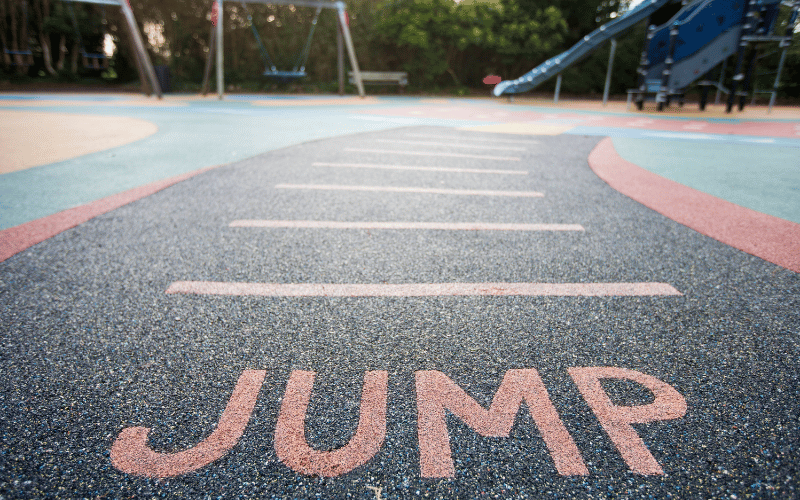
Proactive Maintenance and Repairs
Proactive maintenance ensures your playground remains safe, functional, and visually appealing. By addressing common issues, managing vandalism, and knowing when to replace equipment, you can extend the life of your play structures and maintain a welcoming environment for children.
Addressing Common Issues
Playground equipment faces wear and tear from daily use and weather exposure. Tackling these issues promptly prevents them from escalating into larger problems.
- Repairing Rusted or Corroded Metal: Rust weakens metal components and compromises their structural integrity. Use a wire brush or sandpaper to remove rust, then apply a rust-inhibiting primer and a weather-resistant paint to protect the surface. For heavily corroded parts, replace them immediately to ensure safety.
- Fixing Cracks in Plastic Components: Cracks in slides, panels, or climbers can create sharp edges or weaken the structure. For small cracks, use a plastic repair kit or epoxy resin to seal the damage. If the crack compromises the equipment’s stability, replace the component entirely.
- Sanding and Sealing Wooden Structures: Wooden equipment is prone to splinters, rot, and weather damage. Sand rough or splintered areas to create a smooth surface, and apply a weatherproof sealant or paint to protect the wood from moisture and UV exposure. Regularly inspect for rot, and replace any compromised sections to maintain safety.
Handling Vandalism and Misuse
Vandalism and misuse can quickly degrade the appearance and safety of your playground. Addressing these issues promptly discourages further incidents and keeps the space inviting.
- Removing Graffiti and Sharp Objects Immediately: Graffiti not only detracts from the playground’s appearance but can also encourage more vandalism if left unaddressed. Use a graffiti remover or pressure washer to clean affected surfaces. Inspect for sharp objects like broken glass or nails, and remove them immediately to prevent injuries.
- Repairing Damage to Discourage Future Incidents: Fix damaged equipment caused by misuse or vandalism as soon as possible. For example, if a swing chain is intentionally twisted or a panel is broken, repair or replace it promptly. A well-maintained playground signals that the space is cared for, reducing the likelihood of repeat offenses.
When to Replace Equipment
Even with diligent maintenance, some equipment will eventually need replacement. Recognizing the signs ensures you maintain a safe and modern play environment.
- Signs That Repairs Are No Longer Sufficient: If equipment shows recurring issues, such as rust that reappears after treatment or cracks that continue to spread, it’s time to consider replacement. Structural instability, such as wobbling posts or weakened joints, also indicates the need for new equipment.
- Upgrading to Meet Modern Safety Standards: Older equipment may not comply with current safety guidelines, such as ASTM or CPSC standards. Upgrading to newer models ensures your playground meets these requirements while offering improved durability, accessibility, and play value.
By staying proactive with maintenance and repairs, you can preserve the safety, functionality, and appeal of your playground. Each repair and upgrade contributes to a space where children can play freely, parents can feel confident, and the community can take pride.
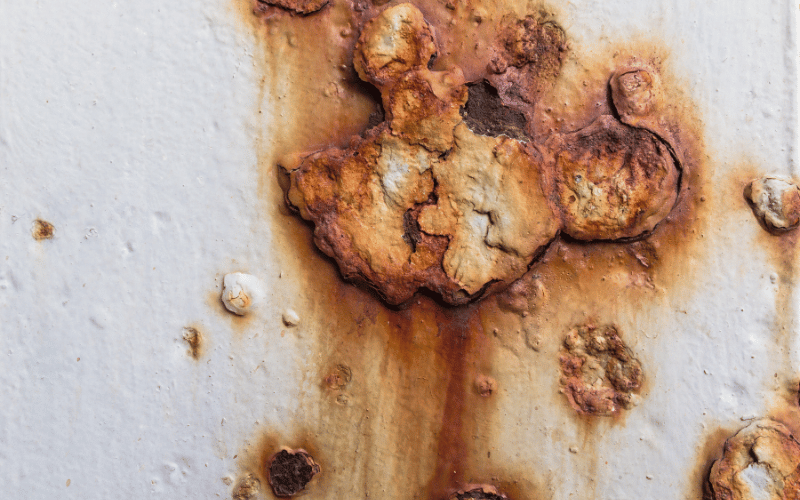
Innovative and Eco-Friendly Maintenance Practices
Incorporating sustainable and modern practices into playground maintenance not only benefits the environment but also enhances efficiency and long-term cost savings. By using eco-friendly materials, leveraging technology, and adopting green landscaping, you can create a playground that’s as kind to the planet as it is to the children who enjoy it.
Using Sustainable Materials for Repairs and Replacements
Choosing sustainable materials ensures your playground remains durable while reducing its environmental impact.
- Opt for Recycled or Recyclable Materials: When replacing components, look for options made from recycled materials, such as HDPE (high-density polyethylene) panels or rubber surfacing made from recycled tires. These materials are not only eco-friendly but also highly durable and weather-resistant.
- Use Non-Toxic, Low-VOC Coatings: For repairs, select paints, sealants, and coatings that are low in volatile organic compounds (VOCs). These products reduce harmful emissions and are safer for children and the environment. For example, when sealing wooden structures, choose a water-based sealant that protects against moisture without releasing toxic fumes.
- Repurpose Old Equipment: Instead of discarding old equipment, consider repurposing it. For instance, turn a retired slide into a planter or use old swing frames as trellises for climbing plants. This approach reduces waste and adds a creative touch to the playground.
Leveraging Technology Like Inspection Apps or Drones for Efficiency
Modern technology can streamline maintenance tasks, making inspections faster and more thorough.
- Use Inspection Apps for Consistency: Digital inspection apps allow you to create checklists, document findings, and track repairs in real time. For example, apps like Playground Guardian or iAuditor let you upload photos, set reminders for follow-ups, and generate reports, ensuring no detail gets overlooked.
- Deploy Drones for Hard-to-Reach Areas: Drones equipped with cameras can inspect tall structures, such as climbing towers or shade canopies, without the need for ladders or scaffolding. This not only saves time but also reduces the risk of injury during inspections. Use drones to capture high-resolution images of wear, rust, or damage in areas that are difficult to access manually.
Incorporating Green Landscaping Practices Around Playgrounds
Green landscaping enhances the playground’s aesthetics while promoting sustainability and environmental health.
- Plant Native Vegetation: Surround the playground with native plants that require less water, fertilizer, and maintenance. For example, drought-tolerant grasses or wildflowers can create a natural buffer zone while supporting local pollinators like bees and butterflies.
- Install Rain Gardens for Drainage: Use rain gardens to manage stormwater runoff and prevent erosion around the playground. These gardens, filled with water-absorbing plants, help filter pollutants and reduce standing water that can damage surfacing materials.
- Provide Natural Shade: Instead of relying solely on artificial shade structures, plant trees strategically around the playground. Species like oak or maple provide ample shade as they mature, reducing heat and creating a more comfortable play environment.
By adopting innovative and eco-friendly maintenance practices, you can create a playground that’s not only safe and functional but also a model of sustainability. Each step, from using recycled materials to leveraging technology, contributes to a space that benefits both the community and the planet.
Compliance with Safety Standards
Meeting safety standards is non-negotiable when it comes to playgrounds. Adhering to established guidelines not only protects children but also reduces liability and ensures your playground remains a trusted community asset. Let’s break down the key standards and how to stay compliant.
Overview of CPSC and ASTM Guidelines for Playground Safety
The Consumer Product Safety Commission (CPSC) and the American Society for Testing and Materials (ASTM) set the benchmarks for playground safety.
- CPSC Guidelines: The CPSC’s Public Playground Safety Handbook outlines best practices for equipment design, installation, and maintenance. It covers critical areas like fall height requirements, spacing between equipment, and surfacing materials. For example, the handbook specifies that loose-fill surfacing like mulch must maintain a minimum depth of 9 inches under equipment with a fall height of up to 7 feet.
- ASTM Standards: ASTM F1487 is the primary standard for public-use playground equipment. It addresses structural integrity, entrapment risks, and accessibility. For instance, it requires that openings in equipment be either smaller than 3.5 inches or larger than 9 inches to prevent head entrapment. ASTM F1292 focuses on impact attenuation for surfacing, ensuring it can adequately cushion falls.
How to Ensure Your Playground Meets Current Regulations
Staying compliant requires a proactive approach to design, installation, and ongoing maintenance.
- Work with Reputable Manufacturers: Choose equipment from manufacturers who design and test their products to meet ASTM and CPSC standards. Request documentation to verify compliance before purchasing.
- Follow Installation Guidelines: Install equipment according to the manufacturer’s instructions and ensure it aligns with safety standards. For example, swings should have a minimum clearance of 24 inches between seats and a fall zone extending at least twice the height of the swing beam.
- Regularly Inspect for Compliance: Use a checklist based on CPSC and ASTM guidelines to conduct routine inspections. Check for issues like inadequate surfacing depth, loose hardware, or gaps that could pose entrapment risks. Address any non-compliance immediately to maintain safety.
When to Consult Certified Playground Safety Inspectors (CPSIs)
Certified Playground Safety Inspectors (CPSIs) bring expertise and an objective perspective to playground safety.
- Schedule Annual Inspections: Hire a CPSI to conduct a comprehensive audit at least once a year. They can identify less obvious issues, such as structural weaknesses or outdated equipment that no longer meets current standards.
- Consult During Major Changes: If you’re installing new equipment, upgrading surfacing, or redesigning the layout, involve a CPSI to ensure the changes comply with safety regulations. Their input can prevent costly mistakes and ensure a smooth approval process.
- Use Their Expertise for Training: CPSIs can also train your maintenance team on safety standards and inspection techniques, empowering them to keep the playground compliant year-round.
By prioritizing compliance with safety standards, you create a playground that not only meets regulations but also fosters trust and confidence among parents and caregivers. Every guideline followed and inspection conducted contributes to a space where children can play freely and safely.
Routine Cleaning and Upkeep
Routine cleaning and upkeep are essential to maintaining a safe, inviting, and hygienic playground. By focusing on sanitation, debris management, and landscaping, you can create an environment where children can play freely without unnecessary risks.
Sanitation and Hygiene
Keeping playground surfaces clean ensures a healthier play environment and prevents the spread of germs.
- Cleaning Surfaces with Non-Toxic Agents: Use mild, non-toxic cleaning solutions to sanitize high-touch areas like handrails, slides, and swing chains. For example, a mixture of water and biodegradable soap works well for most surfaces. Avoid harsh chemicals that could damage materials or irritate children’s skin. Rinse thoroughly to remove any residue.
- Removing Biological Contaminants: Inspect the playground for bird droppings, mold, or mildew, especially on shaded or damp surfaces. Use a soft brush and a diluted vinegar solution to scrub away contaminants. For larger infestations, consider using a pressure washer with a low-pressure setting to clean without damaging the equipment.
Debris Management
Debris not only detracts from the playground’s appearance but can also pose safety hazards if left unaddressed.
- Regularly Clearing Trash, Glass, and Animal Waste: Conduct daily walkthroughs to pick up litter, broken glass, or animal droppings. Equip your team with gloves, trash bags, and a grabber tool to handle waste safely. Install trash bins with lids around the playground to encourage proper disposal and reduce littering.
- Checking for Hazards Like Exposed Roots or Rocks: Walk the perimeter of the playground to identify and address natural hazards. For example, exposed tree roots can trip children, while sharp rocks can cause injuries. Remove these hazards promptly and fill any holes or uneven areas with appropriate materials like mulch or soil.
Landscaping Maintenance
Well-maintained landscaping enhances the playground’s aesthetics and safety while supporting its functionality.
- Trimming Vegetation and Controlling Weeds: Regularly trim bushes, trees, and grass to maintain clear sightlines for supervision and prevent overgrowth from encroaching on play areas. For example, prune tree branches that hang too low over equipment or pathways. Use eco-friendly weed control methods, such as hand-pulling or applying organic herbicides, to keep the area tidy without introducing harmful chemicals.
- Maintaining Mulch or Grass Borders: If your playground uses mulch or grass as a border, ensure it remains well-defined and intact. Rake mulch back into place if it spills into pathways, and reseed grass areas that show signs of wear or thinning.
By committing to routine cleaning and upkeep, you can ensure your playground remains a safe, clean, and enjoyable space for children and families. Each task, from sanitizing surfaces to managing debris, contributes to a play environment that’s as functional as it is welcoming.
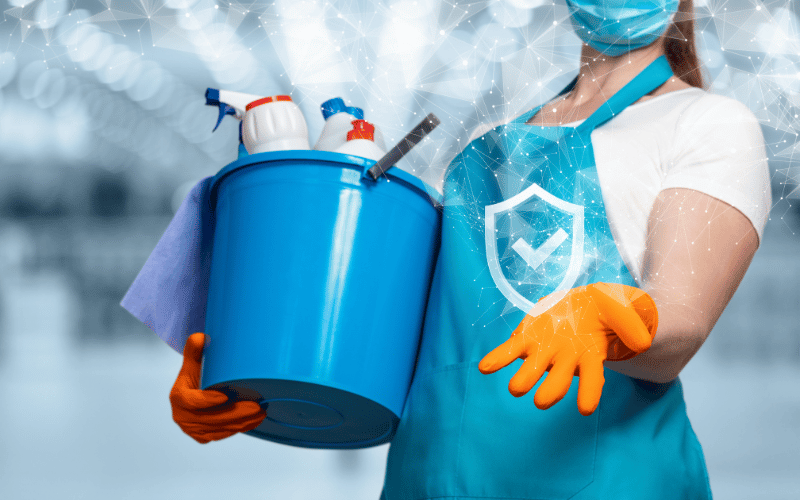
Training and Resources for Maintenance Staff
Equipping your maintenance team with the proper training and resources is the cornerstone of a safe and well-maintained playground. By investing in specialized knowledge, providing access to technical materials, and knowing when to bring in professional help, you can ensure your team is prepared to handle any challenge.
Importance of Specialized Training for Maintenance Personnel
Playground maintenance requires more than basic handyman skills—it demands a deep understanding of safety standards, equipment mechanics, and inspection protocols.
- Provide Certified Training Programs: Enroll your staff in courses offered by organizations like the National Recreation and Park Association (NRPA) or the International Playground Safety Institute (IPSI). These programs teach critical skills, such as identifying hazards, conducting inspections, and understanding ASTM and CPSC standards. For example, a Certified Playground Safety Inspector (CPSI) course equips personnel with the expertise to assess compliance and address safety concerns effectively.
- Conduct Hands-On Training: Pair new staff with experienced team members for on-the-job training. For instance, demonstrate how to measure surfacing depth, tighten hardware, or identify stress points in equipment. Hands-on experience builds confidence and ensures consistency in maintenance practices.
- Emphasize Preventive Maintenance: Train staff to recognize early warning signs of wear and tear, such as rust spots, frayed swing chains, or thinning surfacing. Preventive maintenance not only extends the life of equipment but also reduces the likelihood of costly repairs.
Accessing Technical Manuals and Resources for Proprietary Equipment
Every piece of playground equipment comes with its own set of specifications and maintenance requirements. Ensuring your team has access to the right resources is essential for proper care.
- Keep Manufacturer Manuals on Hand: Store technical manuals for all equipment in a centralized location, whether digitally or in a physical binder. These manuals provide detailed instructions for assembly, maintenance, and troubleshooting. For example, a manual might specify the torque required for bolts or the type of lubricant suitable for moving parts.
- Leverage Online Resources: Many manufacturers offer online support, including video tutorials, FAQs, and downloadable guides. Encourage your team to use these resources for quick reference or to learn about updates to equipment care.
- Maintain a Resource Library: Build a library of industry standards, such as the CPSC Public Playground Safety Handbook and ASTM guidelines. These documents serve as invaluable references for ensuring compliance and best practices.
When to Call in Professional Help for Major Repairs or Inspections
While a well-trained maintenance team can handle most tasks, some situations require the expertise of certified professionals.
- Address Structural Repairs with Experts: If equipment shows signs of significant structural damage, such as cracked beams or compromised welds, call in a professional repair service. Attempting to fix these issues without the proper tools or expertise can lead to further damage or safety risks.
- Schedule Annual Inspections with a CPSI: Certified Playground Safety Inspectors (CPSIs) provide a comprehensive evaluation of your playground, identifying hidden hazards and ensuring compliance with current standards. Their expertise complements your team’s efforts and provides an additional layer of accountability.
- Consult Professionals for Upgrades or Redesigns: When upgrading equipment or redesigning the playground layout, involve professionals to ensure the changes meet safety and accessibility standards. For example, a CPSI can verify that new installations have adequate fall zones and proper surfacing.
By prioritizing training and providing access to resources, you empower your maintenance staff to keep the playground safe, functional, and compliant. Knowing when to call in professional help ensures that even the most complex challenges are addressed with precision and expertise. Together, these efforts create a playground that children and communities can enjoy with confidence.
Conclusion: Prioritizing Safety and Fun
Proactive maintenance is the backbone of a safe, engaging, and long-lasting playground. By addressing issues early, conducting regular inspections, and staying compliant with safety standards, you not only protect your investment but also create a space where children can explore, grow, and thrive. A well-maintained playground isn’t just equipment—it’s a hub of joy, connection, and community pride.
Every effort you put into maintaining your playground contributes to a safer and more enjoyable experience for children. Whether it’s tightening a bolt, replenishing surfacing, or removing debris, these small actions add up to a big impact. Parents can relax knowing their children are playing in a secure environment, and kids can focus on what they do best—having fun.
Ready to take the next step? Download our free maintenance checklist to streamline your efforts or consult a professional to ensure your playground meets the highest standards. Together, let’s create a space where safety and fun go hand in hand.
Bonus: Frequently Asked Questions (FAQs)
Playground maintenance often comes with questions about best practices, timelines, and when to take action. Below, I’ve answered some of the most common questions to help you keep your playground safe and functional.
Q: How often should a playground be inspected?
A: Inspections should follow a regular schedule based on the type of check being performed. Conduct daily or weekly visual inspections to spot immediate hazards like loose bolts, broken parts, or debris. Schedule monthly or quarterly operational checks to assess the functionality and structural integrity of equipment. Finally, arrange for an annual inspection by a Certified Playground Safety Inspector (CPSI) to ensure compliance with safety standards and identify less obvious issues.
Q: What are the key signs of wear on equipment?
A: Look for visible damage such as cracks in plastic components, rust or corrosion on metal parts, and splinters or rot in wooden structures. Pay attention to moving parts like swing chains, hinges, and bearings—fraying, stiffness, or unusual noises often indicate wear. Also, check for loose or missing hardware, sharp edges, and fading or peeling coatings, as these can compromise safety and durability.
Q: How do I know if my playground surfacing needs replacement?
A: Inspect surfacing regularly for signs of wear and deterioration. For loose-fill materials like mulch or sand, measure the depth to ensure it meets fall height requirements—if it’s too shallow, replenish it immediately. For unitary surfacing like rubber tiles or poured-in-place rubber, look for cracks, tears, or areas where the material has hardened or lifted. Poor drainage, puddling, or uneven surfaces are also indicators that replacement may be necessary.
Q: When is it time to replace equipment instead of repairing it?
A: Replace equipment when repairs no longer restore safety or functionality. For example, if rust or cracks compromise the structural integrity of a component, replacement is the safest option. Equipment that repeatedly breaks down or requires frequent repairs may also need to be replaced to save on long-term costs. Additionally, consider replacing older equipment that doesn’t meet current safety standards or fails to provide inclusive play opportunities for children of all abilities.
By addressing these common questions, you can approach playground maintenance with confidence and clarity. Each inspection, repair, or replacement decision contributes to a safer, more enjoyable play environment for everyone.




